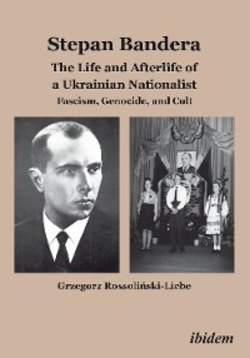Читать книгу Stepan Bandera: The Life and Afterlife of a Ukrainian Fascist - Grzegorz Rossoliński-Liebe - Страница 16
Genocide, Mass Violence, and the Complexity of the Holocaust
Оглавление“Genocide” is a contested term and a concept that makes more sense in legal and political discourse than in historical studies. The use of the term may interfere with academic analysis, by obscuring links between different forms of mass violence conducted by the same group of perpetrators against various ethnic and political enemies.[76] It is not the purpose of this book to argue that some atrocities committed by the OUN, the Nazis, or the Ustaša were genocidal and that others were not, or to equate the Holocaust with other mass crimes in order to elevate the status of suffering of a particular group. My use of the term “genocide” assumes the intention of the perpetrators to annihilate a group or a community because of its national or ethnic identity. By the same token it is important to emphasize the multifarious nature of OUN violence, which was directed against all kinds of ethnic enemies and political opponents, but not against each of them to the same extent. Depending on the context, I frequently prefer terms such as “mass violence,” “ethnic cleansing,” or “crimes against humanity.” In the last two chapters I explain how various groups of political activists and even scholars have abused the term “genocide” by promoting the narrative of victimization.
For a long time, historians who studied the Holocaust, or movements such as the OUN, concentrated on perpetrator documents and overlooked the testimonies, memoirs, reports, and other accounts left by survivors. Those historians believed that the perpetrator documents hold much more reliable data than the documents left by survivors, victims, and bystanders. In the view of such historians, perpetrators were objective, exact and emotionally detached. Survivors, on the other hand, were considered to be emotional, traumatized, and not able to produce any reliable account of the events. This approach was typical of historians such as the OUN specialist John Armstrong, and some German historians such as Martin Broszat, Thilo Vogelsang, and Andreas Hillgruber, who had grown up in Nazi Germany and served in the German army. Similarly, some leading Holocaust historians such as Raul Hilberg and the first director of Yad Vashem, Ben-Zion Duner, also applied this approach. Historians such as Joseph Wulf or Léon Poliakov, who objected to the perpetrator-oriented approach, were mainly Holocaust survivors themselves. They were discredited especially by the German historians as “unscholarly.”[77]
The first public discussion of this methodological problem took place in 1987–1988 between the director of the Institute for Contemporary History (Institut für Zeitgeschichte) in Munich, Martin Broszat, who had joined the NSDAP on 4 April 1944, and the Holocaust survivor and leading Holocaust historian Saul Friedländer. One of the main issues in this debate was “rational” German scholarship versus the “mythical memory” of the victims.[78] The discussion, did not undo the distrust of survivor accounts but the situation began to change a decade later. In 1997 Friedländer returned to the debate in his study Nazi Germany and the Jews. He pointed out the methodological problems that were the result of neglecting survivor perspectives, and pleaded for the use of documents of both perpetrators and survivors, in order to achieve an integrated and comprehensive history.[79] Four years later, Jan Tomasz Gross published a study about the Polish town of Jedwabne. Relying on survivor testimonies Gross proved that the local Polish population killed the Jews of this locality on their own initiative and without any significant help from the Germans.[80] In the following years, historians such as Christopher Browning and Omer Bartov, who had previously concentrated on perpetrators, questioned the alleged uselessness of accounts left by victims and survivors, and provided a methodological foundation for the study of the neglected issues with the help of these documents.[81]
In this study we will follow Freidländer’s plea for an integrated history, and will use two kinds of documents: those left by perpetrators and those left by victims and survivors. This approach will enable us to obtain a full picture of the events. We will obviously deal with both kinds of documents critically. With regard to perpetrator documents, it is necessary to distinguish between propaganda documents, internal documents relating to practical matters, and apologetic postwar memoirs. We must examine the intentions of their authors and consider the circumstances under which they were written. The survivor testimonies and memoirs, on the other hand, should be read against each other and placed in context with perpetrator and bystander documents. Similarly, when analyzing records of NKVD interrogations, we should be aware that such investigations were sometimes conducted under coercive circumstances that affected the content of the records.[82]
